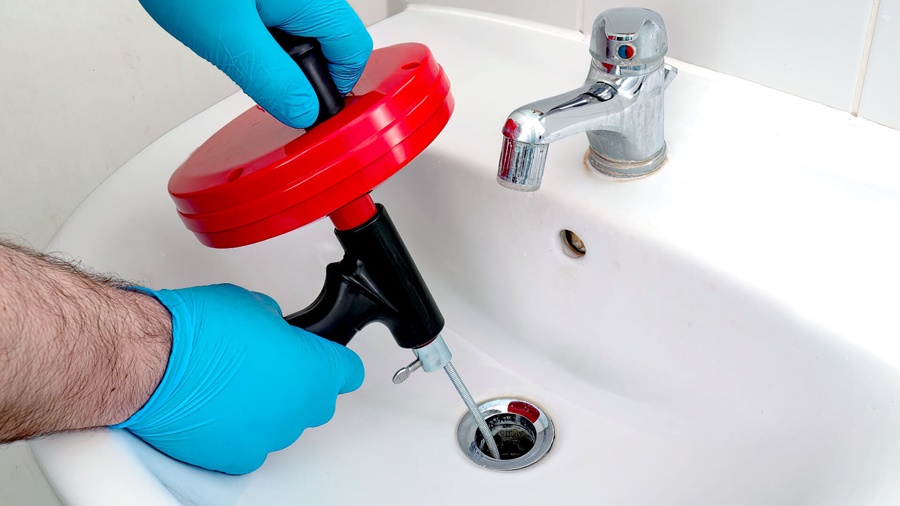A clogged bathroom sink with standing water is more than just a minor inconvenience it’s a disruption to daily routines and a potential hygiene issue. If you're dealing with slow drainage, foul odors, or a sink full of stagnant water, you've come to the right place. In this comprehensive guide, we’ll walk you through professional and DIY methods to effectively unclog your bathroom sink and prevent future clogs.
Understanding the Root Causes of Sink Clogs
Before diving into unclogging techniques, it’s essential to know what causes bathroom sink clogs:
Hair buildup in the drain trap
Soap scum and toothpaste residue
Foreign objects like jewelry, dental floss, or cotton swabs
Grease and oil from skincare products
Mineral deposits in hard water areas
These factors often combine over time, leading to stubborn clogs that block water flow completely.
Step-by-Step Methods to Unclog a Bathroom Sink with Standing Water
1. Remove Standing Water
Before any unclogging method, remove excess water. Use a small cup or bucket to scoop water out of the sink into a bucket or toilet. Removing the standing water will give you better access to the drain and make your cleaning methods more effective.
2. Clear Debris from the Drain Stopper
Most clogs occur just below the sink stopper. Here’s how to clean it:
Unscrew or pull out the drain stopper
Wipe away any visible gunk or hair
Use a flashlight to inspect the drain pipe for further buildup
If you see debris, use a zip-it drain tool or tweezers to pull it out
Pro Tip: Regularly cleaning your stopper can prevent 90% of minor clogs.
3. Use a Plunger for Bathroom Sinks
A sink plunger can often clear mild to moderate clogs. Follow these steps:
1. Seal the overflow hole at the top of the sink with a wet rag
2. Place the plunger over the drain and press down firmly
3. Plunge up and down rapidly for 30 seconds
4. Remove the plunger and check if the water drains
If successful, flush the drain with hot water to clear any remaining residue.
4. Apply Baking Soda and Vinegar
For chemical-free unclogging, use a natural mixture:
Pour 1/2 cup of baking soda directly into the drain
Follow it with 1/2 cup of white vinegar
Immediately cover the drain with a plug or rag to trap the fizzing action
Wait 15–30 minutes, then flush with boiling water
This solution is effective for breaking down organic clogs and deodorizing your drain.
5. Use a Wet/Dry Shop Vacuum
A wet/dry vacuum can be surprisingly effective at sucking out stubborn clogs:
Set the vacuum to liquid mode
Seal the nozzle tightly over the drain using a wet rag
Turn the vacuum on high power for a few seconds
Check the canister to see if the clog has been pulled out
Warning: This method can be messy, so wear gloves and eye protection.
6. Snake the Drain (Drain Auger Method)
If plunging and natural cleaners fail, it’s time to use a drain snake:
Insert the auger cable into the drain slowly
Crank the handle to push it deeper until you feel resistance
Rotate the auger to break up or hook the clog
Pull the snake out and dispose of debris
Flush with hot water to ensure the pipe is clean
This method is ideal for deeper clogs beyond the trap.
7. Clean the P-Trap Under the Sink
The P-trap is a curved section of pipe that collects debris. Here’s how to clean it:
1. Place a bucket under the trap to catch water
2. Unscrew the slip nuts with your hands or pliers
3. Remove the trap and dump out debris
4. Clean the trap with a bottle brush or old toothbrush
5. Reassemble the trap and check for leaks
Cleaning the P-trap is one of the most effective ways to fully clear blockages.
Prevent Future Clogs with These Proven Tips
Prevention is key to avoiding future clogs. Implement these habits:
Use a drain screen to catch hair and debris
Avoid pouring grease, oil, or lotions into the sink
Run hot water after each use to flush soap residue
Perform monthly vinegar and baking soda treatments
Clean the stopper and P-trap quarterly
These simple measures can save you time, money, and frustration.
When to Call a Professional Plumber
If you've tried every method and the water still won’t drain, it may be time to call in an expert. Call a licensed plumber when:
Multiple drains are clogged
Water is backing up into other fixtures
There’s a foul sewer odor in your bathroom
You suspect a broken or collapsed pipe
Plumbers have access to advanced tools like motorized augers and hydro-jetting systems that can resolve complex clogs.
Common Mistakes to Avoid
Avoid these errors when attempting to unclog your sink:
Overusing chemical drain cleaners: These can damage your pipes over time
Forcing the auger too hard: Can crack or dislodge pipes
Ignoring slow drainage: It’s usually a sign a full clog is forming
Not sealing the overflow hole while plunging: This reduces suction effectiveness
Being informed and careful can prevent making the problem worse.
Conclusion
Unclogging a bathroom sink with standing water doesn’t have to be overwhelming. With the right tools, techniques, and preventive habits, you can quickly restore proper drainage and keep your bathroom running smoothly. Whether you use a plunger, a vinegar mixture, or a drain snake, the key is to act fast and clean thoroughly.

